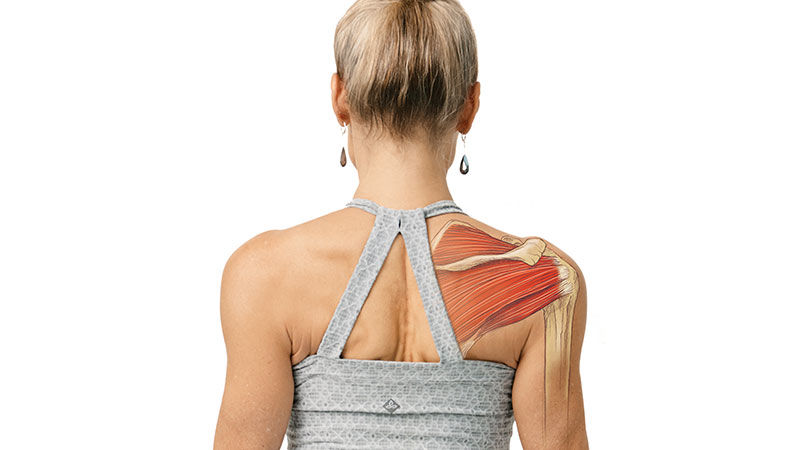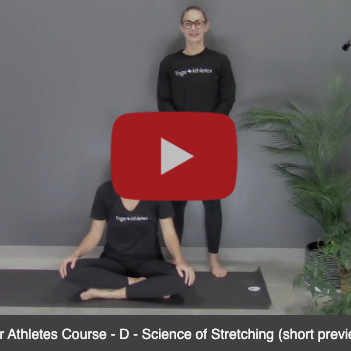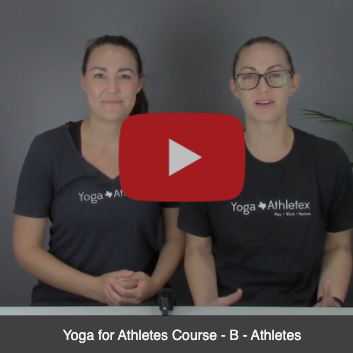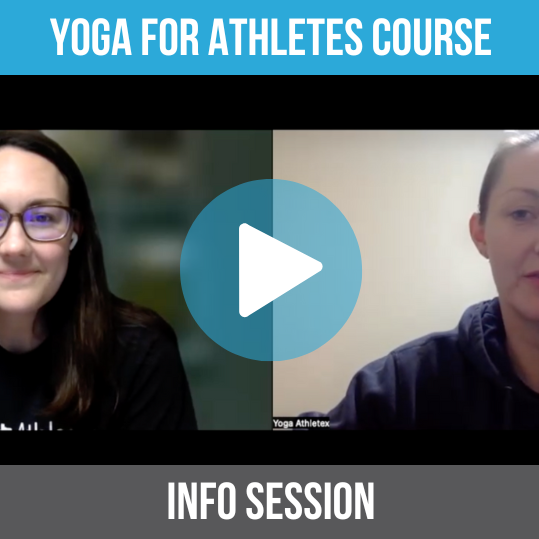We want to address the anatomy of the shoulder, how to strengthen it, how to rehabilitate it and discuss how it relates to yoga.
Shoulder injuries are common in sports such as volleyball, baseball, and even swimming. Overuse alone can detriment the shoulder. So, let’s take a look at it’s make up.
The Bones
The shoulder is comprised of three bones that connect to make the shoulder girdle. These bones include the upper arm bone (humerus), the shoulder blade (scapula), and the collarbone (clavicle). The movements of these three independent bones cause the shoulder to mobilize.
The clavicle and the scapula are bound together by ligaments and have limited range of motion. This area is called the AC joint and feels like a little bump on the top of the shoulder. If these ligaments tear, the injury is labeled a “separated shoulder”.
The scapula is commonly referred to be felt on the upper back, on each side of the spine. While somewhat true, the scapula actually attaches to the humerus and can be felt on the front side of the body. However, we mostly refer to the scapula in terms of the back of the shoulders, down either side of the spine. You might hear me address your shoulder blades in class by imagining the blades being drawn downward toward your back pockets.
The Movements
Just like the hip joint, the shoulder joint flexes, extends, rotates internally and externally, and abducts and adducts. When the humerus reaches its peak range of motion, the body recruits the scapula. When the scapula moves, the humerus moves in connection. Clavicle movement follows scapula movement.
A great example of all three parts working together is when we find a reverse bind in shoulder openers, such as reverse prayer. When all three parts work together properly, we can get the hand to rotate almost 360 degrees! This movement is very important for a volleyball hitter. Significant flexibility in the shoulder will allow the athlete to better place a kill.
Flexibility & Stability
Unfortunately, with more flexibility, comes less stability. What we are looking for in athletics is stability with a sufficient amount of flexibility. So what stabilizes the shoulder joint if it has a large range of motion?
The answer is the muscles. The muscles that stabilize the joint and move the humerus include the pectoralis major (pecs), latissimus dorsi (lats), and the rotator cuff muscles. This is why we participate in many strength exercises, such as planks and push ups, in training.
The rotator cuff is probably the most commonly known in the sport industry as it is most commonly injured. Common rotator cuff injuries include tears, impingement, bone spurs, and bursitis. These injuries are common in volleyball, softball and baseball players, to name a few.
Yoga and the Shoulders
So, how does this relate to yoga? The shoulder joint is utilized quite a bit in vinyasa styled classes. Postures such as down dog, up dog and especially chataranga can significantly activate the shoulders. That is why I frequently stress proper alignment in these postures… to avoid injury and build strength and stabilization.
Get started with a movement screen
A Functional Movement System Screen is recommended for all athletes. It assess mobility, stability, and injury potential.
It identifies limitations and imbalances – some you might not even be aware of! Correcting these will decrease your chance of injury, improve your coordination, and increase your performance.

STAY IN THE LOOP!
Subscribe to our free newsletter.
Here's a 4-minute video clip from the 19-minute section about the Science of Stretching from the Yoga Coaching Course!
Here's an 8-minute video about athletes from the Yoga Coaching Course!
Here's a 7-minute introduction video for the Yoga Coaching Course.
This course will give you a better understanding of the importance of yoga and how to apply it to the athletes you currently work with.



